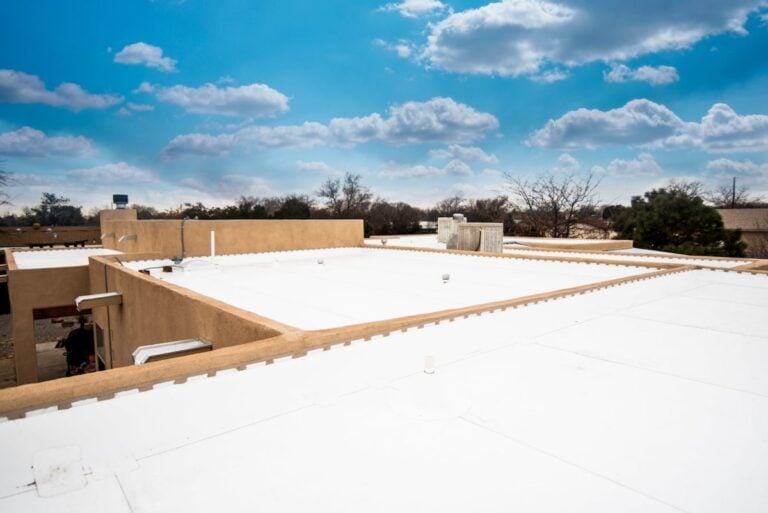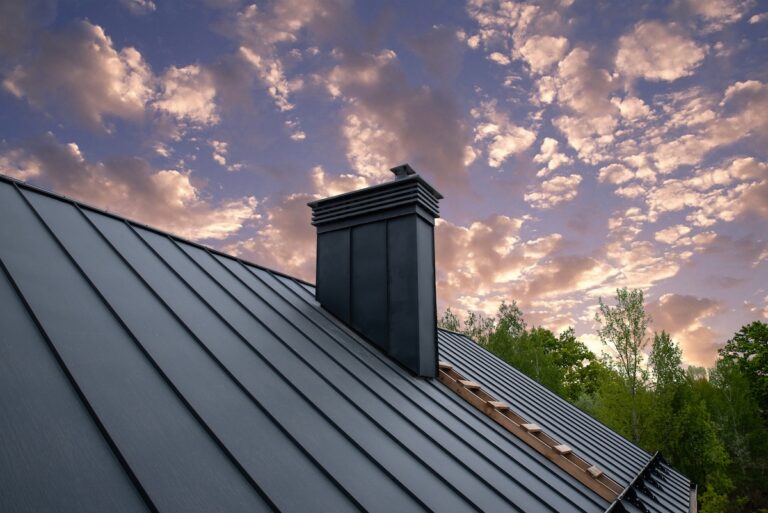Flat Roof Repair: 8 Common Issues & Fixes
Flat roofs are a popular choice for commercial buildings and modern homes, but they come with unique challenges that require specialized knowledge and maintenance. When problems arise, understanding the common issues and their solutions can help you make informed decisions about flat roof repair and maintenance.
From ponding water to membrane damage, flat roofs face specific problems that differ from traditional pitched roofing systems. The good news is that most flat roof issues are repairable when addressed promptly by experienced professionals. Whether you’re dealing with a small leak or considering a complete roof replacement, knowing what to look for can save you time, money, and prevent costly structural damage to your property.
This comprehensive guide covers the most common flat roof problems, their causes, and effective repair solutions. We’ll explore:
- Why flat roofs develop unique problems
- The 8 most frequent flat roof repair issues and how to fix them
- When to call professionals versus attempting DIY repairs
- Preventive maintenance strategies to extend your roof’s lifespan
- How to choose the right roofing contractor for your flat roof repair needs
Understanding Flat Roof Systems
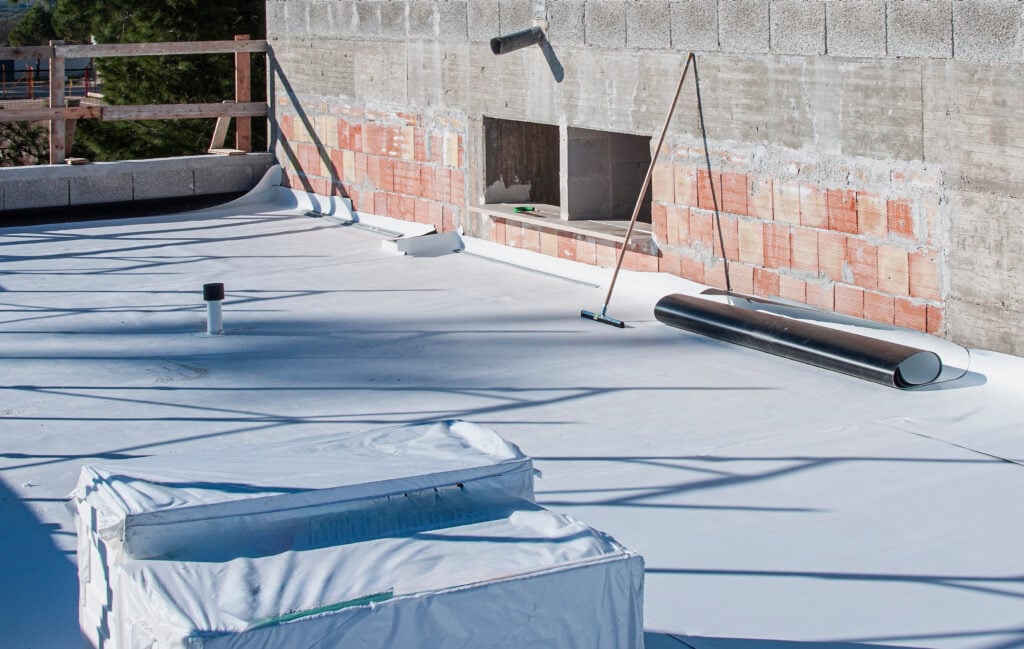
Flat roofs aren’t completely flat—they typically have a slight slope of 1/4 inch per foot to promote water drainage. However, this minimal slope creates unique challenges that don’t affect steeper pitched roofs.
Most flat roofs’ materials are membrane systems made from materials like TPO (Thermoplastic Polyolefin), EPDM (Ethylene Propylene Diene Monomer), or modified bitumen. These materials create a waterproof barrier across the entire roof surface, but they’re more susceptible to certain types of damage than traditional shingles.
The structural design of flat roofs means they experience different stress patterns than pitched roofs. Water tends to collect rather than quickly drain away, and the roof surface endures more direct exposure to UV rays, temperature fluctuations, and weather elements throughout the year.
Why Flat Roofs Require Specialized Repair Approaches
- Flat roof repair requires different techniques and materials compared to traditional sloped roofs.
- Flat roofs use membrane systems designed as continuous waterproof barriers, meaning small punctures or tears can cause significant water infiltration if not sealed properly.
- Temperature changes cause flat roof materials to expand and contract more dramatically than shingles, creating stress points where seams may separate or where the roof meets walls, HVAC equipment, or other roof penetrations.
- Professional flat roof repair addresses these unique challenges with suitable materials and techniques to ensure long-lasting solutions.
- DIY repairs often fail because they don’t address the root causes of flat roof problems or use incompatible materials with the existing roof system.
8 Common Flat Roof Issues and Why They Matter
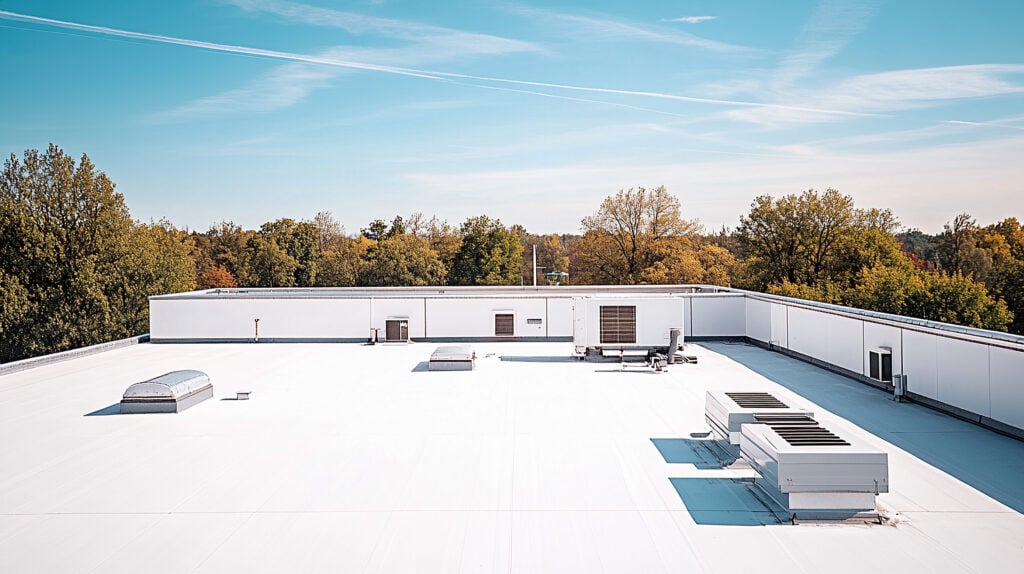
Flat roof issues can lead to significant damage if not addressed, including leaks, structural problems, and costly repairs. Understanding these common problems is crucial to maintaining your roof’s integrity and extending its lifespan.
1. Ponding Water
Ponding water occurs when water collects and remains on the roof surface for more than 48 hours after rainfall. This happens due to inadequate drainage, structural settling, or debris blocking drainage systems.
Causes:
- Clogged drains or gutters
- Insufficient roof slope
- Structural sagging
- HVAC equipment blocking water flow
Professional Fix: Roofers assess the drainage system and roof structure to determine the root cause. Solutions may include installing additional drains, creating tapered insulation systems to improve slope, clearing existing drains, or repositioning equipment that blocks water flow. In severe cases, structural repairs may be necessary to address sagging areas.
2. Membrane Punctures and Tears
Sharp objects, falling debris, foot traffic, and equipment installation can puncture or tear flat roof membranes. Even small holes can allow significant water infiltration.
Causes:
- Hail damage
- Falling tree branches
- HVAC maintenance activities
- Installation of satellite dishes or other equipment
- Normal wear from foot traffic
Professional Fix: Small punctures are repaired using membrane patches and appropriate sealants that match the existing roof system. The repair process varies depending on the material. When comparing TPO vs PVC roofing, for example, both require heat welding to fuse the new material to the old. In contrast, EPDM membranes are repaired with adhesives and specialized tapes, while modified bitumen repairs often involve torch-applied or cold-applied patches.
3. Seam Separation
Seams where membrane sections join together can separate over time due to thermal movement, inadequate installation, or aging adhesives.
Causes:
- Temperature-induced expansion and contraction
- Poor initial installation
- Aging adhesive systems
- Excessive foot traffic along seam lines
- UV degradation of sealing materials
Professional Fix: Separated seams are cleaned, prepared, and re-sealed using manufacturer-approved adhesives and techniques. This may involve removing old adhesive, applying primer, and installing new seaming tape or liquid-applied sealants. Proper technique ensures the repair integrates seamlessly with the existing membrane system.
4. Flashing Problems
Flashing around roof penetrations, walls, and equipment often fails due to thermal movement, UV exposure, or improper installation.
Causes:
- Separation from thermal expansion
- Cracked or brittle flashing materials
- Loose or missing fasteners
- Inadequate overlap with roof membrane
- Corrosion of metal flashing components
Professional Fix: Failed flashing is removed and replaced with new materials appropriate for the roof system. This includes proper integration with the membrane, adequate fastening, and use of compatible sealants. Metal flashing may be replaced with more durable options, and all penetrations are properly sealed to prevent water infiltration.
5. Blistering
Blisters form when moisture gets trapped between roof layers and expands due to heat, creating bubble-like protrusions in the membrane surface.
Causes:
- Moisture trapped during installation
- Inadequate vapor barriers
- Poor ventilation
- Installation over damp surfaces
- Manufacturing defects in membrane materials
Professional Fix: Small blisters that haven’t compromised the membrane’s waterproof integrity may be monitored. Larger or damaged blisters are cut open, moisture is removed, the area is allowed to dry, and new membrane material is installed with proper sealing. Addressing underlying moisture sources prevents future blistering.
6. Alligatoring
This weathering pattern creates a scaly, alligator-skin appearance on the roof surface, typically indicating advanced UV damage and membrane deterioration.
Causes:
- Extended UV exposure
- Natural aging of roofing materials
- Poor maintenance
- Low-quality membrane materials
- Excessive thermal cycling
Professional Fix: Minor alligatoring can be addressed with protective coatings that restore the membrane and provide UV protection. Extensive alligatoring usually requires partial or complete membrane replacement, as the underlying structure may be compromised. Professional assessment determines whether repair or replacement is more cost-effective.
7. Clogged Drains
Blocked drainage systems prevent proper water removal, leading to ponding water and potential structural damage.
Causes:
- Leaf and debris accumulation
- Ice formation during winter
- Nesting birds or animals
- Sediment buildup
- Damaged or collapsed drain pipes
Professional Fix: Drains are thoroughly cleaned and inspected for damage. This may involve removing debris, snaking drain lines, repairing damaged components, or installing drain guards to prevent future blockages. Regular maintenance prevents most drainage problems from developing.
8. Edge Detail Failures
Problems along roof edges, including fascia separation, cap sheet lifting, or inadequate edge securement, can allow wind-driven rain to infiltrate the roof system.
Causes:
- Wind uplift forces
- Inadequate fastening systems
- Thermal movement
- Poor initial installation
- Aging adhesive systems along edges
Professional Fix: Failed edge details are rebuilt using proper fastening techniques, compatible materials, and adequate overlap with the main membrane. This may involve installing new edge metal, re-securing loose membrane sections, and applying appropriate sealants to create weatherproof edges.
Preventive Maintenance for Flat Roofs
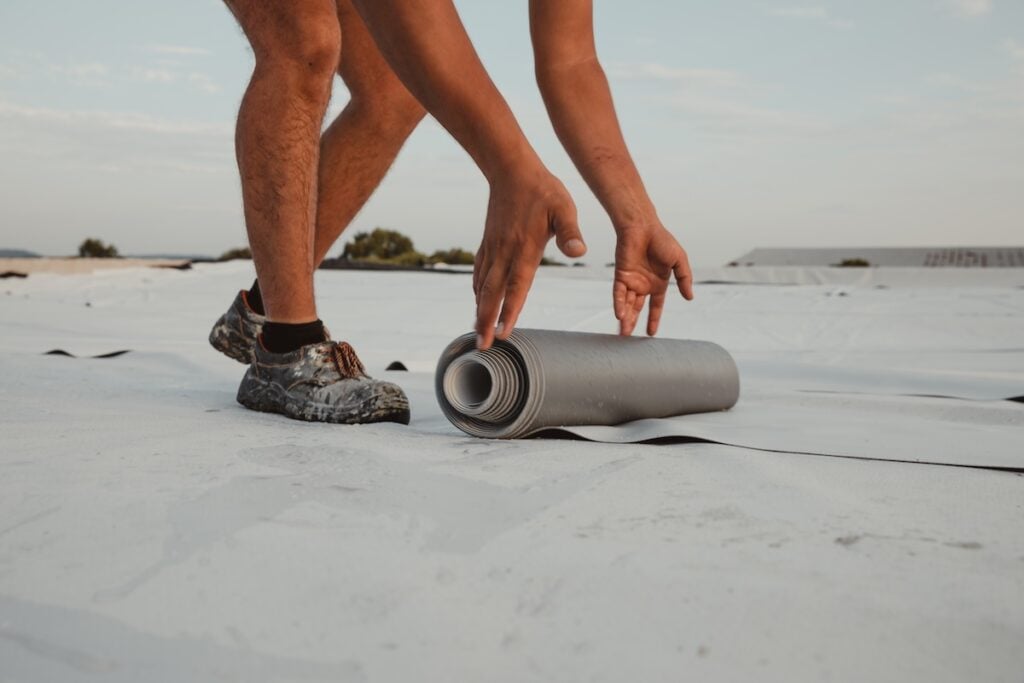
Regular maintenance significantly extends flat roof lifespan and prevents many common problems. Professional maintenance programs typically include:
Seasonal Inspections
Spring and fall are the ideal times for routine roof inspections. These inspections help identify potential problems early, before they turn into costly repairs. Professional roofers will check for signs of damage, such as cracks, leaks, or areas of wear, and pinpoint spots that need immediate attention. Regular inspections also ensure that your roof is ready for seasonal weather challenges, such as heavy rain, snow, or high winds.
Drain Cleaning
Keeping your drains clean is essential for preventing water backup and ponding that can damage your roof over time. Regular maintenance involves removing debris like leaves, dirt, and branches from roof surfaces, drains, and gutters. By ensuring proper water flow, you can reduce the risk of leaks, mold growth, and structural damage caused by standing water.
Seam and Flashing Checks
Seams and flashing are critical components of your roof’s waterproofing system, but they can degrade over time. Periodic inspections and maintenance of these areas help prevent water infiltration, which can lead to leaks and compromise the roof’s integrity. Proactive care for seams and flashing not only helps avoid costly repairs but also extends the lifespan of your roofing membrane.
Protective Coatings
Applying protective, reflective coatings to your roof can offer multiple benefits. These coatings protect the roof membrane from UV damage, improve energy efficiency by reflecting sunlight, and provide an additional layer of weather protection. By investing in protective coatings, you can enhance your roof’s durability and performance while potentially lowering energy costs.
Trust Cabezon Roofing for Your Flat Roof Repair Needs
At Cabezon Roofing, we understand that flat roof repair requires more than just a quick fix—it demands expertise, quality materials, and a commitment to getting the job done right. Our team of highly trained professionals takes pride in delivering reliable, long-lasting solutions tailored to your specific needs. With the highest GAF Contractor Certifications and a deep understanding of New Mexico’s unique climate challenges, we’re the trusted choice for flat roof repairs across the I-25 corridor.
Whether you’re dealing with leaks, storm damage, or regular wear and tear, you can count on us to protect your property with expert care and attention to detail. Don’t settle for less when it comes to your roof—contact Cabezon Roofing todayfor a professional assessment and repairs you can rely on for years to come!

